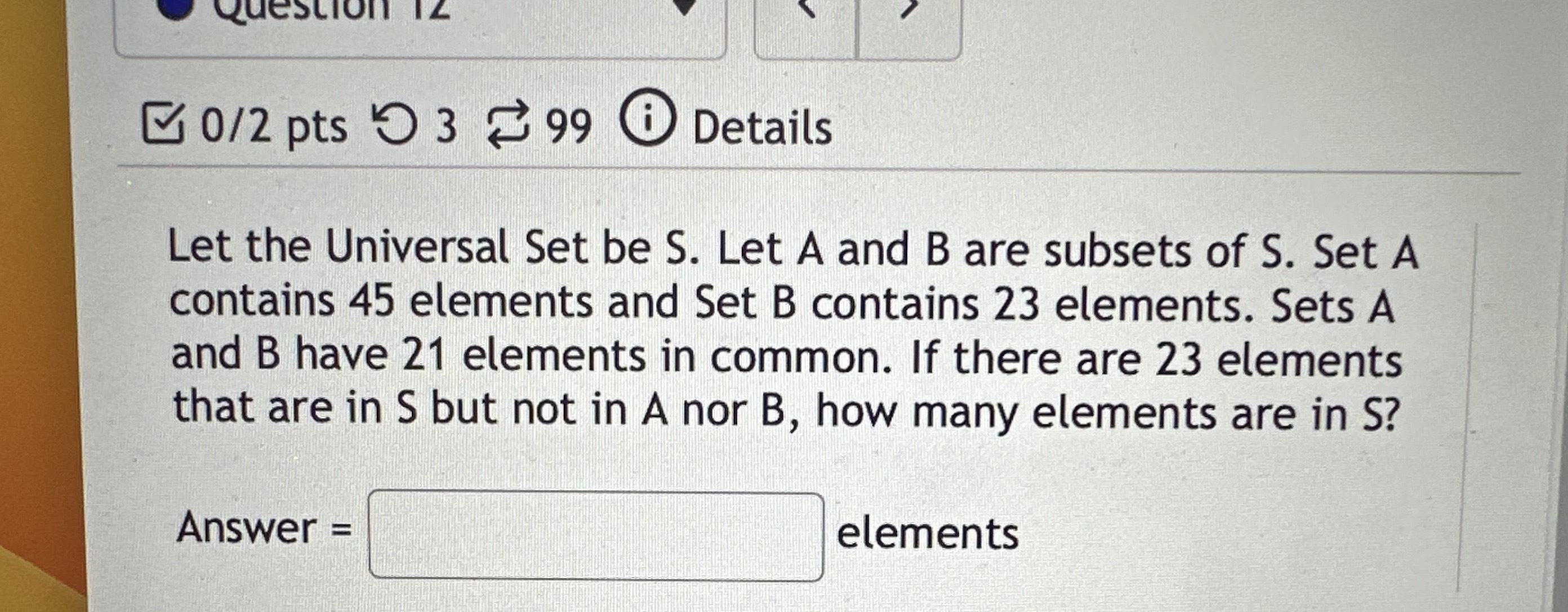Valdez Whittaker
06/25/2023 · Senior High School
\( 0 / 2 \) pts \( 3 \rightleftarrows 99 \) (i) Details Let the Universal Set be S. Let A and B are subsets of S. Set A contains 45 elements and Set B contains 23 elements. Sets A and \( B \) have 21 elements in common. If there are 23 elements that are in S but not in A nor B, how many elements are in S? Answer \( = \) elements
UpStudy ThothAI Solution
Step-by-step Solution
To find the number of elements in the universal set \( S \), we can use the principle of inclusion-exclusion.
The principle of inclusion-exclusion states that the number of elements in the union of two sets is equal to the sum of the number of elements in each set, minus the number of elements in their intersection.
In this case, we have:
\(|A \cup B| = |A| + |B| - |A \cap B|\)
Substituting the given values, we have:
\(|A \cup B| = 45 + 23 - 21\)
\(|A \cup B| = 47\)
Now, we need to add the number of elements that are in \( S \) but not in \( A \) or \( B \). We are given that there are 23 such elements.
\(|S| = |A \cup B| + |S \setminus (A \cup B)|\)
\(|S| = 47 + 23\)
\(|S| = 70\)
Therefore, there are 70 elements in the universal set \( S \).
Quick Answer
70
Answered by UpStudy AI and reviewed by a Professional Tutor
UpStudy ThothAI
Self-Developed and Ever-Improving
Thoth AI product is constantly being upgraded and optimized.
Covers All Major Subjects
Capable of handling homework in math, chemistry, biology, physics, and more.
Instant and Accurate
Provides immediate and precise solutions and guidance.
Try Now
Ask Tutors
Ask AI
10x
Fastest way to Get Answers & Solutions
By text
Enter your question here…
By image
Submit
